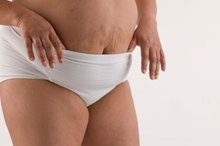What does fact checked mean?
At Healthfully, we strive to deliver objective content that is accurate and up-to-date. Our team periodically reviews articles in order to ensure content quality. The sources cited below consist of evidence from peer-reviewed journals, prominent medical organizations, academic associations, and government data.
- Clinical Evidence: Colic in Infants
- Clinical Evidence: Colic in Infants
- Italian Journal of Pediatrics: Infantile Colic, Facts and Fiction
- Italian Journal of Pediatrics: Infantile Colic, Facts and Fiction
The information contained on this site is for informational purposes only, and should not be used as a substitute for the advice of a professional health care provider. Please check with the appropriate physician regarding health questions and concerns. Although we strive to deliver accurate and up-to-date information, no guarantee to that effect is made.
Infant and Newborn Gas Relief
All babies produce intestinal gas, but some are more bothered by it than others. Fortunately, you can help your baby get past gas with simple home remedies. If your baby has forceful vomiting or cries without stopping for several hours, call your pediatrician.
During the Feeding
Swallowing air can create intestinal gas and is the main source of gas in the stomach. If you bottle-feed, hold the bottle at an angle to ensure that no air enters the nipple. Use a nipple that prevents milk from flowing too rapidly. If you breast-feed, express a little milk before putting the baby on the breast, so that the milk flows slowly and the baby doesn't have to gulp to swallow it.
- Swallowing air can create intestinal gas and is the main source of gas in the stomach.
- If you bottle-feed, hold the bottle at an angle to ensure that no air enters the nipple.
Burping Techniques
How to Relieve Trapped Stomach Gases
Learn More
After feeding, help your baby eliminate gas pain by burping him well. It's difficult for him to get rid of gas when he's lying flat. Some babies prefer being held over your shoulder, which puts pressure on the abdomen and helps them get the gas up. Others prefer being held over your arm or on their stomach over your knees. Never put a baby on his stomach to sleep, because this sleeping position increases the risk of sudden infant death syndrome.
- After feeding, help your baby eliminate gas pain by burping him well.
- Some babies prefer being held over your shoulder, which puts pressure on the abdomen and helps them get the gas up.
Medications
Simethicone drops, marketed and sold as an over-the-counter treatment for infant colic, haven't proven any more effective than a placebo in many clinical trials 1. Gas drops allow gas bubbles to coalesce and disperse more quickly, but don't eliminate gas altogether. Talk to your doctor before giving your baby any medication, including over-the-counter treatments, for gas.
Related Articles
References
- Clinical Evidence: Colic in Infants
- Italian Journal of Pediatrics: Infantile Colic, Facts and Fiction
- Pediatric Gastrointestinal Disease: Pathophysiology, Diagnosis, Management; W. Allan Walker, et al. (eds.)
- Family Medicine Obstetrics; Stephen D. Ratcliffe, et al. (eds.)
- Abrams EM, Becker AB. Food introduction and allergy prevention in infants. CMAJ. 2015;187(17):1297–1301. doi:10.1503/cmaj.150364
- Morais MB. Signs and symptoms associated with digestive tract development. J Pediatr (Rio J). 2016;92(3 Suppl 1):S46-56. doi:10.1016/j.jped.2016.02.008
- Little C, Blattner CM, Young J 3rd. Update: Can breastfeeding and maternal diet prevent atopic dermatitis?. Dermatol Pract Concept. 2017;7(3):63–65. doi:10.5826/dpc.0703a14
- Greer FR, Sicherer SH, Burks AW. The effects of early nutritional interventions on the development of atopic disease in infants and children: the role of maternal dietary restriction, breastfeeding, hydrolyzed formulas, and timing of introduction of allergenic complementary foods risk factors for accidental and suicidal death in cancer patients. Pediatrics. 2019;143(4) doi:10.1542/peds.2019-0281
- Mathias JG, Zhang H, Soto-Ramirez N, Karmaus W. The association of infant feeding patterns with food allergy symptoms and food allergy in early childhood. Int Breastfeed J. 2019;14:43. doi:10.1186/s13006-019-0241-x
- Greer FR, Sicherer SH, Burks AW. Effects of early nutritional interventions on the development of atopic disease in infants and children: the role of maternal dietary restriction, breastfeeding, timing of introduction of complementary foods, and hydrolyzed formulas. Pediatrics. 2008;121(1):183-91. doi:10.1542/peds.2007-3022
- Husby S. Food allergy as seen by a paediatric gastroenterologist. J Pediatr Gastroenterol Nutr. 2008;47 Suppl 2:S49-52. doi:10.1097/01.mpg.0000338813.97803.16
- Lewis-Jones S, Mugglestone MA; Guideline Development Group. Management of atopic eczema in children aged up to 12 years: summary of NICE guidance. BMJ. 2007;335:1263-1264. doi:10.1136/bmj.39405.503773.AD
- Vandenplas Y, Rudolph CD, Di lorenzo C, et al. Pediatric gastroesophageal reflux clinical practice guidelines: joint recommendations of the North American Society for Pediatric Gastroenterology, Hepatology, and Nutrition (NASPGHAN) and the European Society for Pediatric Gastroenterology, Hepatology, and Nutrition (ESPGHAN). J Pediatr Gastroenterol Nutr. 2009;49(4):498-547. doi:10.1097/MPG.0b013e3181b7f563
Writer Bio
A registered nurse with more than 25 years of experience in oncology, labor/delivery, neonatal intensive care, infertility and ophthalmology, Sharon Perkins has also coauthored and edited numerous health books for the Wiley "Dummies" series. Perkins also has extensive experience working in home health with medically fragile pediatric patients.







